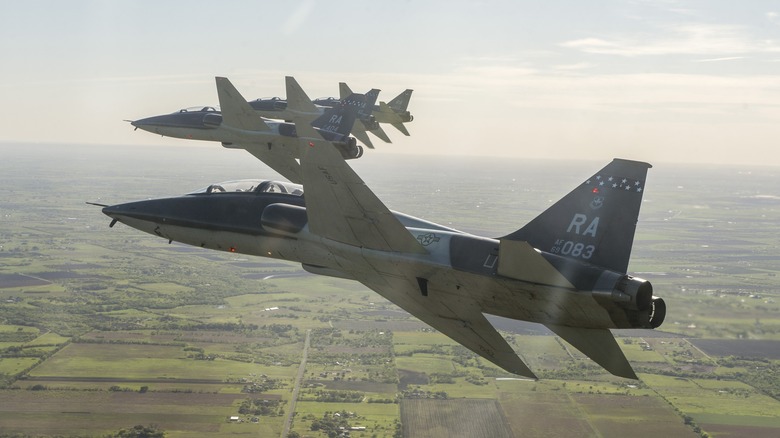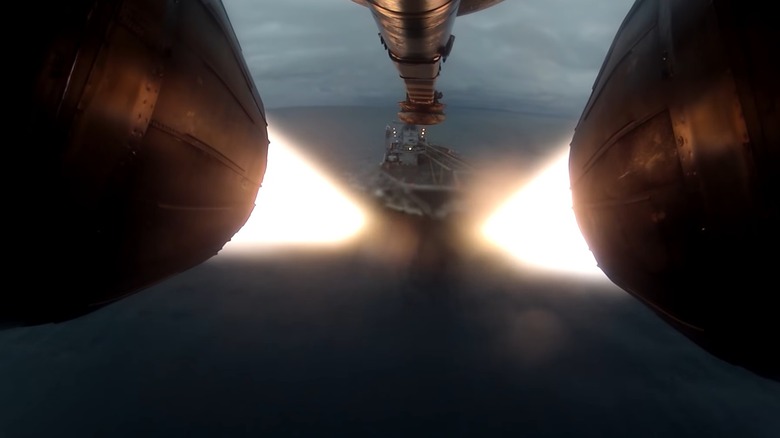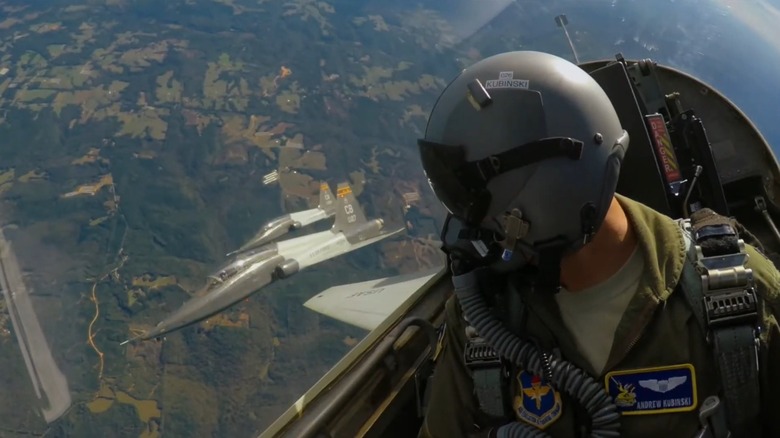Here's How Fast A T-38 Jet Can Go After Its Afterburner Is Initiated
How does the military prepare pilots for the extreme rigors of flying a cutting-edge fighter jet? Since 1959, the U.S. Air Force has relied on the capable performance of the T-38 Talon as a trainer aircraft, helping hone inexperienced aviators with high altitudes and supersonic flight. According to the U.S. Space & Rocket Center, there are around 562 T-38s in active service within both the U.S. Air Force training program and NASA. However, after 65 years, the USAF has begun transitioning toward a new training aircraft that will eventually replace the T-38 altogether.
It's not just the U.S. that uses this supersonic jet; several of America's allies still actively fly the T-38, incorporating several upgrades over the decades to keep up with advancing technology. With many years in use, an aircraft must offer impressive capabilities to sustain such a lengthy service life, and the T-38 is no exception. So, what sort of performance can the Northrup Grumman T-38 Talon achieve?
This jet can go from sea level to around 30,000 feet in 60 seconds, can reach an altitude ceiling greater than 55,000 feet, and can take off from short runways measuring only 2,300 feet. The T-38 has a top speed of Mach 1.3 and utilizing afterburners can climb at speeds around Mach .92.
Why do jets have afterburners, and how do they work?
The T-38 Talon has 2 General Electric J85-GE-5 turbojet engines that incorporate afterburners. With a robust 2,050 pounds of dry thrust, the engines alone provide a significant output of performance power. So, what is the purpose of the afterburners, then? Afterburners temporarily boost the amount of thrust available and enhance a jet's capabilities. For example, while the T-38 Talon's engines produce 2,050 pounds of dry thrust (no afterburner), once the afterburners kick in, it jumps to 2,900 pounds, an increase of 850 pounds of thrust.
An afterburner is a system that, when engaged, sends additional jet fuel into the mix, creating a more dramatic reaction between the fuel and available oxygen. To break it down into simple steps: first, a jet engine swallows air; this air becomes tightly compacted and then combined with jet fuel and ignited. The reaction of the burning fuel powers the turbine and sends a massive amount of energy out of the rear of the engine, creating motion. This process results in leftover oxygen that the afterburner can take advantage of, increasing overall kinetic energy output. Sometimes, this boost of thrust and the resulting speed can put pilots in unfortunate situations, such as the time a U.S. fighter jet shot itself out of the sky by colliding with its own flying bullets.
The T-38: what do its afterburners help it achieve
More than 70,000 pilots have trained on the T-38 Talon sometimes nicknamed "The White Rocket" and it's considered by some to be an aircraft that's challenging to fly proficiently. It's fitting then that this particular supersonic jet is used to help pilots learn the ropes of high-performance flying. The T-38 can use its afterburners for over 20 minutes, reaching speeds of 812 mph. At speeds greater than sound, trainee pilots get to experience the changes in the control stick, where it "becomes mushy, and you can stir it all around without the aircraft moving."
With its afterburners engaged, the T-38 Talon can reach over 700 mph while angled upward, hitting 30,000 feet within a minute. According to pilots who have been in the cockpit of the T-38, when they climb hard with afterburners, "the altimeter just spins." With superb maneuvering capabilities and a spotless safety history, it is no wonder the T-38 continues to fly today. With dogfights in the digital age, how fighter jet pilots train for modern warfare is especially vital, and supersonic lessons are still learned on the T-38.


